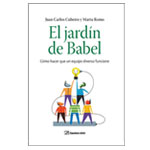Looking for more insights?
Sign up to stay informed about our latest article releases.
What happens when very different sorts of people join together on the same team to pursue a common goal? Conflicts arise as a result of prejudices and opposing values, and they can wind up destroying a critical corporate project. These days, managing diversity is a challenge for companies everywhere around the world. To address these questions, Juan Carlos Cubeiro, who founded the Eurotalent coaching firm, and Marta Romo, who manages Eurotalent, have written a book called, The Garden of Babel, in which they create a fictitious team of nine people of widely different characteristics who have to work together on a plan for the Spanish educational system. Cubeiro tells Universia-Knowledge at Wharton his solution for getting any group of people to function effectively together.

Sign up to stay informed about our latest article releases.